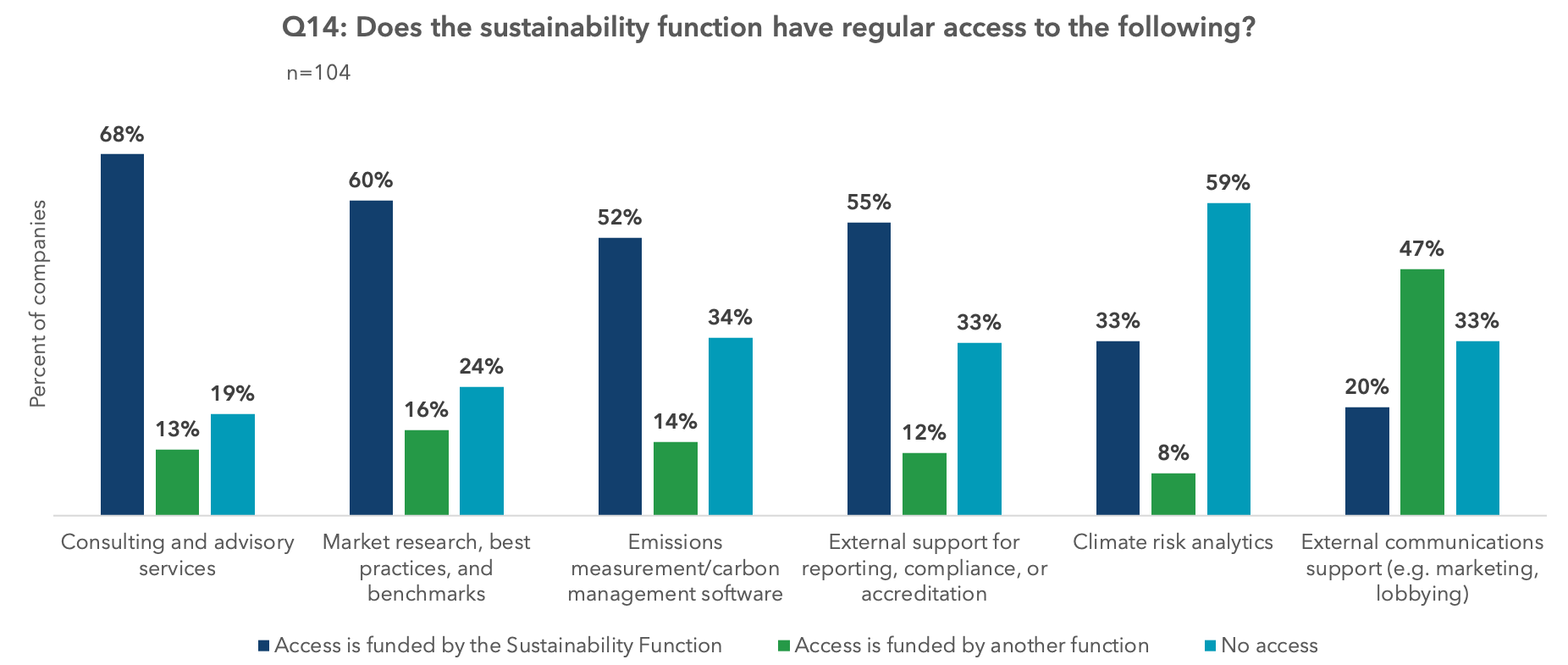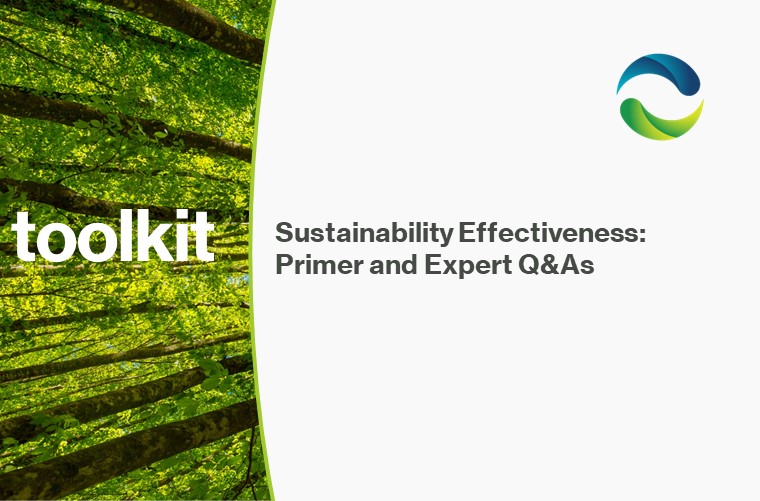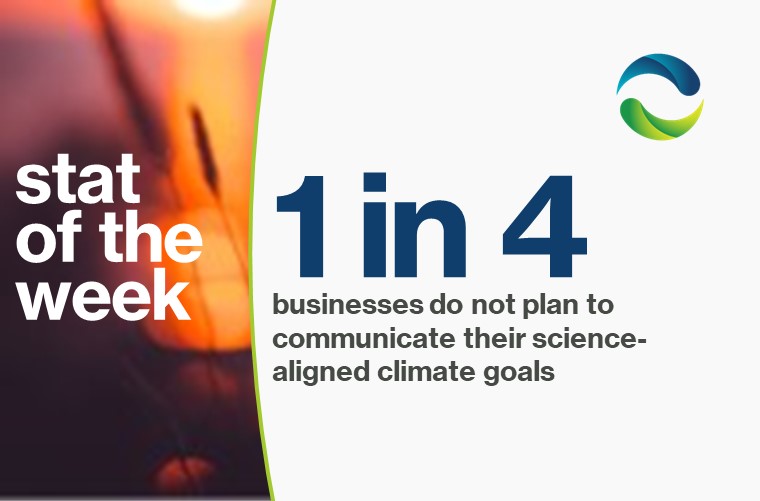In our 2022 Sustainability Function Benchmarking Survey, we asked over 100 respondents if they have regular access to six different resources. These included consulting and advisory services, emissions measurement software, and communications support. At least two-thirds of respondents had access to all resources listed, except for one—climate risk analytics—which was only available to 41% of respondents.

Compared to the other choices in the survey, it’s not surprising that climate risk analytics was least likely to be accessible. Increasing pressure to measure and report company emissions makes services like carbon management software and support for reporting, compliance, and communication key to meeting regulatory and consumer demands. Similarly, consulting and market research can help organizations identify and make progress on their climate commitments.
With so many external pressures, climate risk analytics is not the most immediate priority for many organizations. In fact, only 6% of respondents would prioritize this service if they received a 20% budget increase. Much of the global discourse around climate change, both within and outside of the corporate sector, is focused on mitigation—how we can curb our emissions to prevent the worst effects of climate change. Less attention is given to the other core component in any climate change strategy: adaptation. How can businesses, communities, etc. become more resilient to the effects of climate change that are already being felt and expected to worsen in the coming decades?
Experts predict that the UN’s goal of keeping emissions below 1.5°C by 2050 is no longer attainable, with the IPCC noting that we have a 50% chance of reaching 1.5°C in the 2030s if more aggressive action is not taken this decade. Rising temperatures are predicted to increase storm surges, droughts, and sea rise, all of which can have a significant impact on business operations. These effects are most acutely felt in the global south but have been observed around the world, from persistent drought in California to extreme temperatures in Europe this summer. In addition to prioritizing efforts to reduce global temperature rise, we must also take actions to adapt to our new reality.
Acknowledging this obligation, adaptation was a key theme at COP27 last month. Although much of COP27’s focus on adaptation was within the global south, adaptation should increasingly be a priority for organizations worldwide, to address operational risks and growth opportunities.
Part of an adaptation strategy is understanding the risks of physical climate hazards on business operations. Climate risk analytics is key to determining what assets, operations, or points along a business’s supply chain are most susceptible to the effects of climate change and where organizations should focus their efforts to build resiliency. In fact, climate risk analytics was one topic of discussion at The Climate Board’s CFO Roundtable earlier this year. At the event, Karan Chopra, of Cervest, noted how technology has advanced to enable a more granular understanding and interpretation of climate risk data.
Although mitigating the physical risk of climate change can be costly upfront, climate adaptation also presents opportunities for long-term growth and innovation. Businesses should consider how adaptation could increase their market capture, explore how new technologies could improve efficiency or advance business priorities, and create ways to innovate current products or services to meet the demands of a climate-conscious economy. A recent CDP survey of S&P 500 companies found that, on aggregate, the reported financial benefits of climate adaptation opportunities were “15x higher than the potential impact of climate-related risks.” For companies to realize these opportunities, it is important for the sustainability function to partner closely with the strategy department. Collaboration and sharing of resources and information across the organization will be key both to addressing climate risks and identifying profitable opportunities for innovation.





